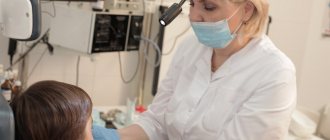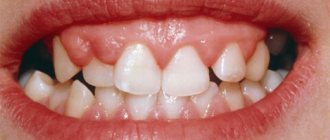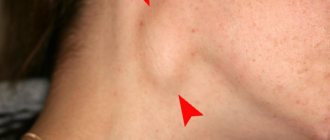basic information
Syphilis is an infection that can be transmitted between people in various ways and poses a direct threat to life. Foci of syphilis can be located in intimate areas, on the arms, and torso. In recent years, cases of infection in the mouth have become more frequent. The following photos in the new collection of the site Obolezi.com will demonstrate what it looks like.
Diagnosis of tertiary syphilis
Tertiary syphilis of the pharynx must be differentiated from tuberculosis, scleroma and malignant neoplasms of the pharynx. Gummous ulcerations are painless and have sharply defined edges and a bluish-red color. They do not cause the disorders that occur with pharyngeal tuberculosis. The bottom of a syphilitic ulcer is shiny, smooth and shaped like a crater. For a final diagnosis, histological examination is necessary.
Risks of getting sick
If you are confident that your body is ready to withstand any challenge, know: after the first contact with a patient, the chances of being photographed showing syphilis on the face are 80%. The remaining 20% is not due to the presence of immunity to treponema, but to too little of it to cause a big problem.
Causes of syphilis in the mouth
Treponema pallidum - the causative agent of syphilis
There is congenital and acquired syphilis. The first occurs when a pathogen passes through the placenta from an infected mother to the fetus. The second develops when Treponema pallidum infects a person, penetrating through injured mucous membranes and skin during sexual intercourse.
Experts pay attention to factors that contribute to causing syphilis in the mouth:
- The use of non-sterile medical instruments in dentistry and ENT practice.
- Entry of the pathogen into the bloodstream during blood transfusion, during injections, during surgery.
- Using the same household items (cutlery, toothbrush, bath accessories).
- Oral sex.
There are circumstances that increase the risk of infection. These include:
- Injuries to the mucous wall of the oral cavity.
- Unhealthy lifestyle.
- Weak general and local immunity.
More about symptoms
Symptoms vary depending on the current stage. So, at first, signs of infection appear only by the appearance of papules on the skin (or mucous membranes, in the case of a photo of syphilis in the throat), in place of which an ulcer later forms. By the end of the first stage, the ulcers disappear on their own and appear with renewed vigor in the second. With the beginning of the second stage, internal organs begin to suffer. At the third stage, total intoxication of the body occurs. The rash on the body becomes massively lumpy.
Diagnosis of secondary syphilis
Secondary syphilitic lesions of the pharynx must be distinguished from diseases such as leukoplakia, aphthous stomatitis, diphtheria, ulcerative membranous tonsillitis, and pharyngeal tuberculosis.
Friends! Timely and correct treatment will ensure you a speedy recovery!
In the tertiary period of development of syphilis of the mucous membranes
The most common and important manifestations are lesions of the oral cavity, pharynx and pharynx.
Tertiary lesions of the tongue can manifest themselves in the form of isolated gummas (soft tumor), which develop in its thickness, or as diffuse infiltration, which covers most of the tongue, and then turns into diffuse sclerosis (pronounced coarsening) of the mucous membrane and muscle tissue.
But most often the location of the tertiary form of syphilides is the soft and hard palate. Most often in this case there is a diffuse form, but in some cases limited gummous tumors are observed. The pathological process begins with virtually no pain and is a diffuse swelling, and then thickening and compaction of the soft palate, which gradually loses its mobility. Infiltrates usually have a bluish-red color. Then the gummas disintegrate and deep ulcers are formed, which have sharply defined edges.
Make an appointment right now!
Call us by phone or use the feedback form
Sign up
Tertiary lesions in the pharynx can take the form of tubercular syphilis or gummous lesions, which are mainly localized on the vault of the pharynx and its posterior wall. Such lesions are very rarely detected before ulceration, because they practically do not bother the patient.
After the healing process of gummous-ulcerative lesions, dense scars appear, as well as adhesions between the arches, walls of the pharynx and the soft palate, which often causes atresia (fusion) of the pharynx and disruption of the swallowing process.
Throat lesion
The pharynx is involved in the formation of the voice; it is part of the digestive tract and respiratory system.
Primary syphilis provokes the appearance of a formation, usually on one side.
The defeat leads to constant coughing and hoarseness.
Secondary syphilis leads to infection of the larynx.
Accompanied by a skin rash, it usually covers all areas of the skin.
Elements can be located on the palms and soles.
Tertiary syphilis entails gummous lesions.
Decay is the destruction of the bones of the spinal column and skull.
Bleeding may occur and breathing may be disrupted.
With such disorders, the patient is able to breathe through the mouth, and a change in voice occurs.
Note! When the first signs of syphilis appear, you should immediately visit a specialist and begin treatment.
An infection detected in a timely manner can be easily treated.
If the course of the disease has been started, complications develop.
One of these complications is the death of soft tissues.
The function of the vascular system is impaired, and constant bleeding may occur.
The third period of syphilis is always organ damage.
If treatment is not started in time, death is possible.
Symptoms and stages (+photos)
The formation of syphiloma is possible in any area of the oral cavity. Often a cause of concern is a hard formation that appears in the gum area or on the mucous membrane of the lips. It is painless, but causes discomfort during chewing and articulation movements and does not look aesthetically pleasing. The size of the rash ranges from 0.1 to 2.0 cm. Their location can be single or group.
External signs of syphilis in the mouth are characterized by visual manifestations, each of which is characteristic of the stage of the disease.
| Stage | Symptoms |
| First | In the mouth, at the site of the affected mucous membrane, a round ulcer with a hard consistency is observed. Characterized by the absence of pain. A single ulcer may form, or several may form at once in different parts of the oral cavity. The main localization sites for chancre are the tonsils, tongue, periodontal tissue and the inner cheek area. |
| Second | Characterized by the disappearance of chancre. The oral mucosa becomes covered with rashes. As the pathology progresses, they develop into red roseola, which, as the pathology progresses, begin to merge and rapidly increase in size. The main location is the palate, the edging of the lips inside the mouth, and the tongue. Purulent abscesses and papules may appear. |
| Third | Nodules, bumps and abscesses are observed in the affected areas of the oral cavity. At the initial stage, seals form on the tongue, which quickly transform into large ulcers. Gummas are often located singly. It is small in size, with a diameter of no more than 1.5 cm. Subsequently, it opens and turns into an abscess, accompanied by pain. |
Signs of different types of syphilis in the oral cavity
In medical practice, depending on the stage of development of the pathology, the following are distinguished:
- Primary syphilis in the mouth is manifested by a hard ulcerative formation, the so-called chancre. In the initial stage of the disease, an increase in the cervical, submandibular and occipital lymph nodes is noted. The duration of this period is from six to eight weeks. But even in the presence of the first symptoms of syphilis, it is not possible to determine the causative agent of the disease in a laboratory. In such cases, a polymerase chain reaction blood test is prescribed.
- Secondary syphilis in the mouth is characterized by the appearance of rashes of various types and more pronounced symptoms. After the end of the second phase of the disease, remission occurs, which can be periodically interrupted by exacerbation of the pathology. This action can happen up to ten times. The duration of the period reaches an average of five years.
- Tertiary syphilis in the mouth is the last stage of the disease, manifested by irreversible damage to organs of various body systems. The central nervous system especially suffers in the form of paresis, cerebral disorders, dementia and other pathologies.
Routes of infection
The development of syphilis in the mouth involves the following routes of infection:
- Intrauterine , when a pregnant woman with syphilis has not received a therapeutic course, there is a risk of infection of the fetus. It depends on the degree of the disease, and then the child can be born with congenital syphilis, with deformities, with pathologies leading to death, or maybe healthy.
- The everyday route of infection occurs when basic rules of personal hygiene are ignored and the use of household items and medical instruments contaminated with syphilis pathogens that are not disinfected and washed in the proper way.
- The sexual route of infection with oral syphilis occurs from an infected person to a healthy partner during oral sex and kissing.
Intrauterine infection with syphilis
Treponema pallidum enters the human body due to abrasions, scratches of the epidermis and mucous membrane, as well as through the blood. Having penetrated the body, the spirochete is localized in the tissue base. The incubation stage lasts from two weeks to six months. During this period, the microbe has penetrated the mucous membrane, but does not yet cause the degree of damage that would have a clinical picture.
Congenital oral syphilis can result from intrauterine transmission of triponema. When an infected woman gives birth who has not completed the appropriate therapeutic course, the child is born with signs of syphilis in the oral cavity.
Possible complications
Complications of syphilis in the mouth often develop due to untimely treatment and diagnostic examination. In this connection, the pathogenic effect of spirochetes extends beyond the tissues in the oral cavity and to systemic organs inside the body.
A clear example of a complication of syphilis in the mouth.
As a result, various complications arise, manifested by:
- Damage to the skeletal system and organs.
- Necrosis of the muscular skeleton at the site of the lesion.
- Local bleeding.
- Dysfunctions of the circulatory system.
- Asymmetry of the face with damage to the facial and cervical muscles.
- Destruction of the cellular structure of the brain.
It is important not to delay visiting a venereology clinic in order to prevent the development of severe consequences of this insidious disease. And it must be remembered that immunity to this venous disease is not formed and therefore, if any rash appears on the mucous membrane of the cheeks, gums, or tongue, you should seek medical advice from specialists.
Treatment
Do not self-medicate under any circumstances!
The main objective of the therapeutic course is the elimination of Treponema pallidum from the body, relief of symptoms and prevention of pathology. Treatment is carried out exclusively in the venereology department of specialized medical institutions.
The treatment course consists of:
- Local therapy , which consists of washing syphilitic lesions with antiseptic drugs. Most often, the main active component of such antiseptics is chloramine. If the ulcers are bleeding, they are treated with white mercury ointment. Calomel or xeroform powders provide effective symptomatic relief. A solution of chromic acid or 10% lapis will help stop the growth of hypertrophic ulcers.
- Antibacterial therapy . Long-term use of antibiotics is prescribed. Most often, a long course of penicillin injections is given. If you are intolerant to penicillin, take tableted antibiotics of various groups.
- Taking immunomodulators helps strengthen the body's protective functions.
- Symptomatic treatment is selected taking into account the stage of development of syphilis and accompanying symptoms. For this purpose, antipyretics, painkillers, antihistamines, and agents to stimulate tissue regeneration are prescribed.
- Sequestrectomy is performed if the disease clinically subsides completely.
Important! Secondary and tertiary forms of syphilis are practically untreatable. Regular examination for this pathology will allow timely identification of the disease and its effective treatment.
The prognosis for recovery after diagnosis of syphilis in the mouth can be positive, subject to timely detection and immediate treatment of the pathology. When treating this disease, it is important to complete the full course and not mistake a temporary reduction in symptoms for recovery.
Preventive measures
Prevention of sexually transmitted syphilis is based on the following measures:
- Systematic screening for syphilis, especially if you are sexually active.
- Avoid casual sexual relationships with little-known partners.
- Mandatory use of barrier contraceptives, especially during oral sex.
Household syphilis can be prevented by observing the following preventive measures:
- Strict adherence to personal hygiene rules.
- Avoiding physical contact with an infected person.
- When living together with a sick person, there must be strictly individual dishes, personal hygiene items, clothing and bedding.
- Systematic disinfection of bathroom items.
Reference! Preventive therapy is prescribed to family members who have a sick person.
Prevention of congenital syphilis consists of:
- Preliminary examination for syphilis at the preparatory stage for pregnancy.
- Throughout pregnancy, undergo routine examinations for syphilis RPHA.
- If the results are positive, the woman undergoes mandatory treatment.
- Undergoing preventive treatment provided that the woman has previously had syphilis.
Within 2 days after sexual contact with a possibly infected person, you can get emergency prevention of syphilis from a venereologist.











